Demolition of Civilian Property
Former residents of the villages around Amerli said they saw militias destroying homes and infrastructure with explosives and heavy machinery both during and after the fighting to lift the siege of the village. J.M., a resident of Hufriyya Kabira, 15 km from Amerli, told Human Rights Watch that between 30 and 50 cars carrying town residents who had earlier fled fighting between militias and ISIS returned on September 23, 2014, after hearing that the militias had withdrawn, to check on the status of their homes and belongings. J.M. said he returned to a scene of total devastation:
I saw the village was completely destroyed, from the health center to the newer brick houses, which they destroyed with explosives. They also blew up the Asiacell [mobile phone company] tower.[30] The mud houses were burned along with the belongings in the homes and some had been destroyed by bulldozers.… I returned [again the next day] as I had 3 houses, one of them brick, and I wanted to collect some of the windows that were still intact. They were scattered around due to the force of the explosion inside the house. I was only able to find 10 intact porcelain plates from my 3 houses. All the furniture was burned, even the steel in the ceiling had melted…. They also took the electric transformers, burned down one of the schools and destroyed the high school building. The village is no longer livable at all.[31]
Human Rights Watch examined satellite imagery recorded on the morning of September 17 over Hufriyya Kabira and found graphic evidence that over 95 percent of village buildings were destroyed, in most cases reduced to rubble. Damage signatures identified in the satellite imagery indicated a large majority of these buildings had likely been demolished with heavy explosives as well as earth moving equipment, although the possibility that some building destruction was the result of air strikes cannot be ruled out in this case.
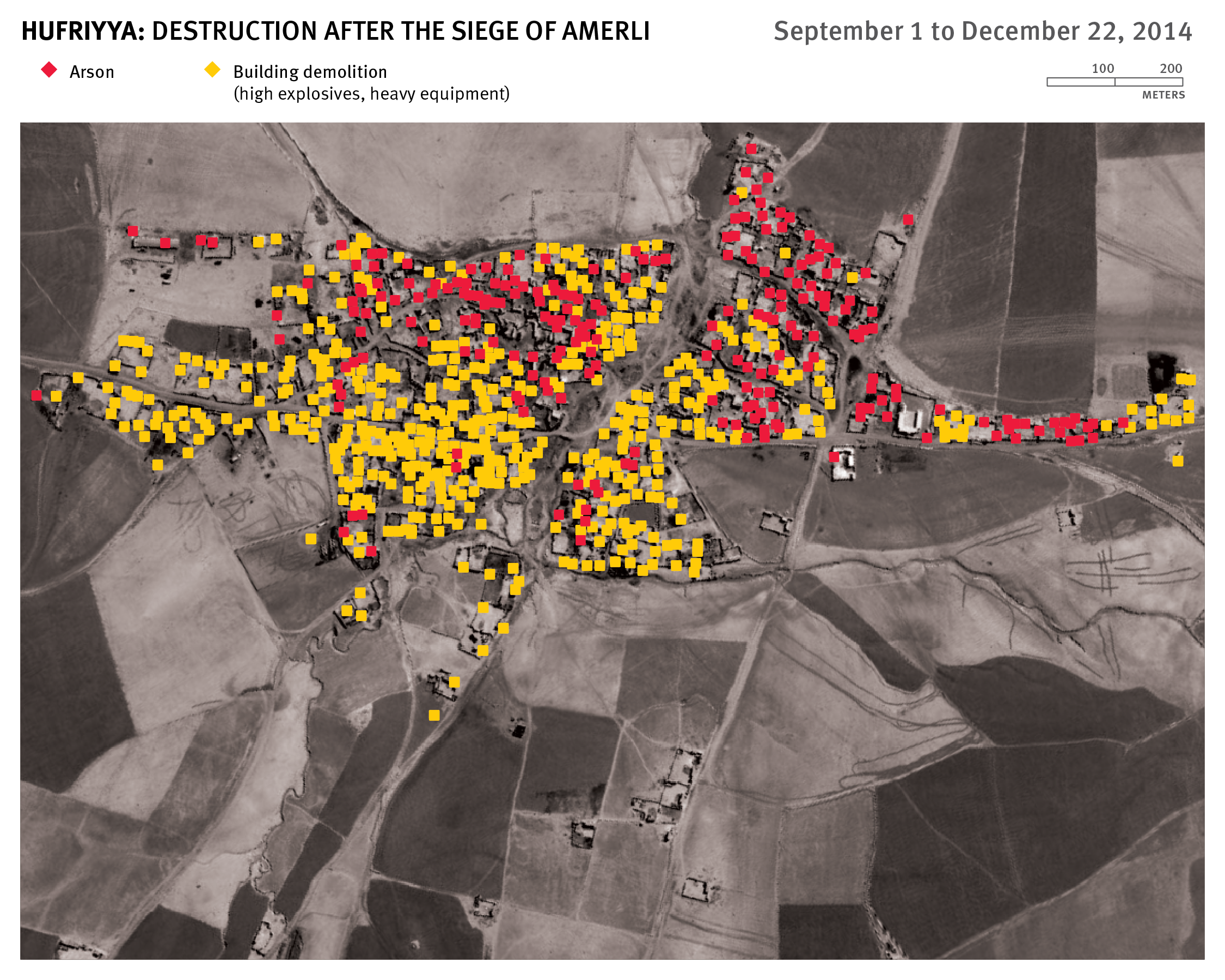
It was also apparent that building demolition was concentrated in the center and northern sections of the village, and that buildings in the southern end of Hufriyya Kabira had been primarily destroyed by fire. Satellite imagery recorded later, on September 28 and December 22, shows evidence that limited building demolition activity continued after September 17, and building fires continued for several more weeks, raising the total number of destroyed buildings in Hufriyya Kabira to over 730.
Demolition in Hufriyya
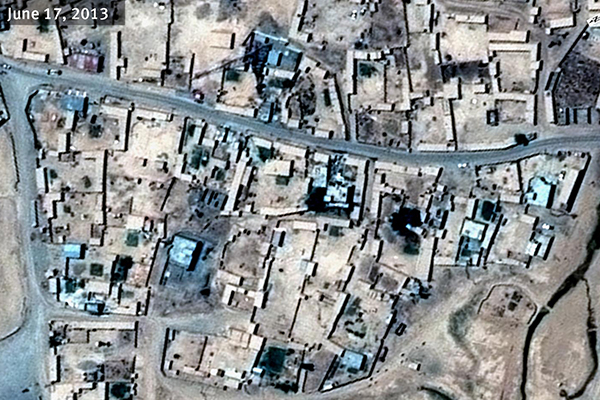

Witnesses from Laqum and Yengija also said militiamen destroyed farming land, food stores and agricultural land, ruining the livelihoods of local residents and making the prospect of return even harder. K.A. from Laqum, a village of approximately 200 houses, told Human Rights Watch that militias used earthmoving equipment to destroy two lakes that he used to farm fish, in addition to destroying and burning homes.[32]
Demolition in Yengija
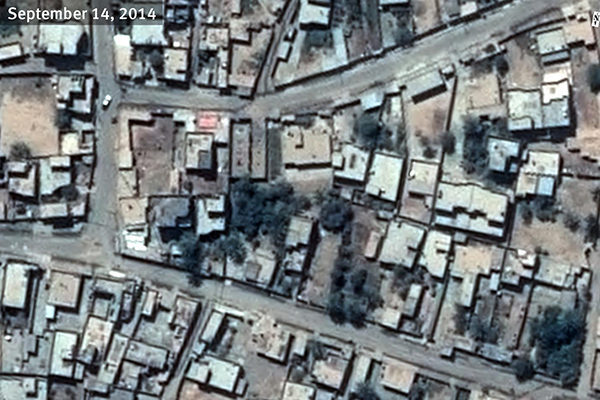
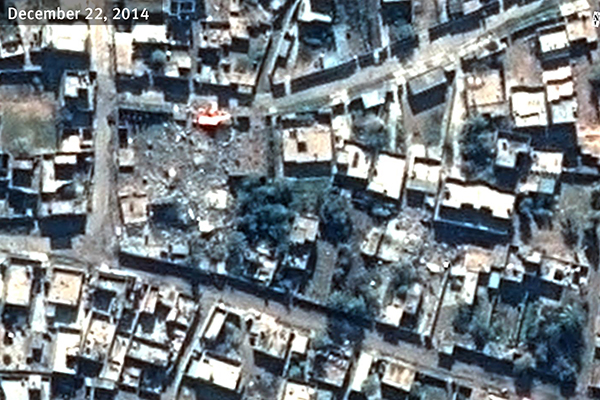
During field investigations in the villages of al-Salaam and Yengija, approximately 10 kilometers from Tuz Khurmato, Human Rights Watch saw several militia groups active in the area, but could clearly identify only Saraya Tala’a al-Khorasani and the Badr Brigades by their flags and the insignia on their uniforms. Researchers examined on the outskirts a restaurant and small supermarket that according to Peshmerga sources militias destroyed using RPGs and heavy machinery. Peshmerga officers told Human Rights Watch that they saw militias target the businesses and believed it was because they belonged to Kurds and Sunni Arabs. Peshmerga soldiers said that they overheard the militiamen making sectarian remarks, and inside the destroyed restaurant Human Rights Watch saw sectarian slogans scrawled on the wall.[33]
Demolition in Albu Hasan
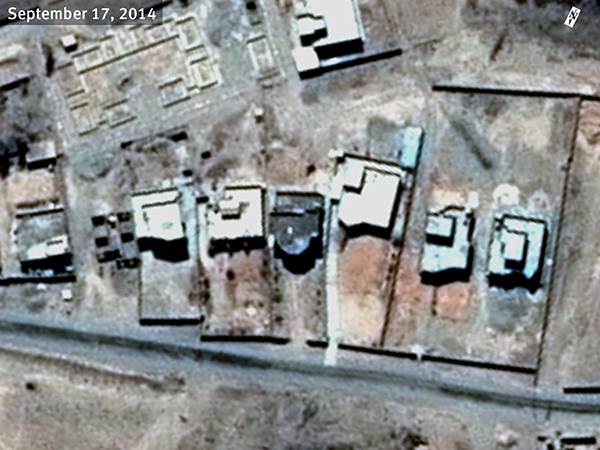

Human Rights Watch observed 18 collapsed buildings in the Yengija and al-Salaam villages and visited numerous damaged sites in the area around the villages. At least two appeared to have been damaged by aerial bombings. Peshmerga officers who had been defending the area during the fighting with ISIS told Human Rights Watch that three other buildings were destroyed by mortars. In addition to the battle-damaged buildings, Human Rights Watch observed an entire street with flattened buildings in the center of Yengija, which the militia Saraya Tala’a al-Khorasani controlled at the time of the field visit in mid-October. The militia spray-painted its name and Shia slogans across several of the damaged buildings.
Human Rights Watch observed entire residential streets in Yengija where concrete houses showed damage consistent with explosions detonated inside the building. Exterior walls had collapsed, and concrete roofs lay flat and relatively undamaged across the rubble. Three former Yengija residents separately told Human Rights Watch that houses throughout Yengija had been destroyed when a militia occupying the village razed homes using explosives in the weeks that followed the Amerli operation. Human Rights Watch also viewed a video provided by residents of houses in other areas of Yengija that showed destruction that appeared to be consistent with an explosion from inside the house.[34]
Human Rights Watch also analyzed satellite imagery recorded over Yengija and identified a total of 40 buildings likely demolished with high explosives or possibly in a few cases with earth-moving equipment, consistent with evidence of local residents and direct observations by Human Rights Watch on the ground. Building demolition was concentrated in the eastern and western sections of Yengija, with the majority of fire damaged buildings in the center of town. An examination of building destruction in satellite imagery over time shows that almost all building demolition occurred in Yengija after September 14, well after the end of fighting in the area, with the majority of building demolition (30 buildings representing 75 percent of the total) occurring between September 28 and November 6.